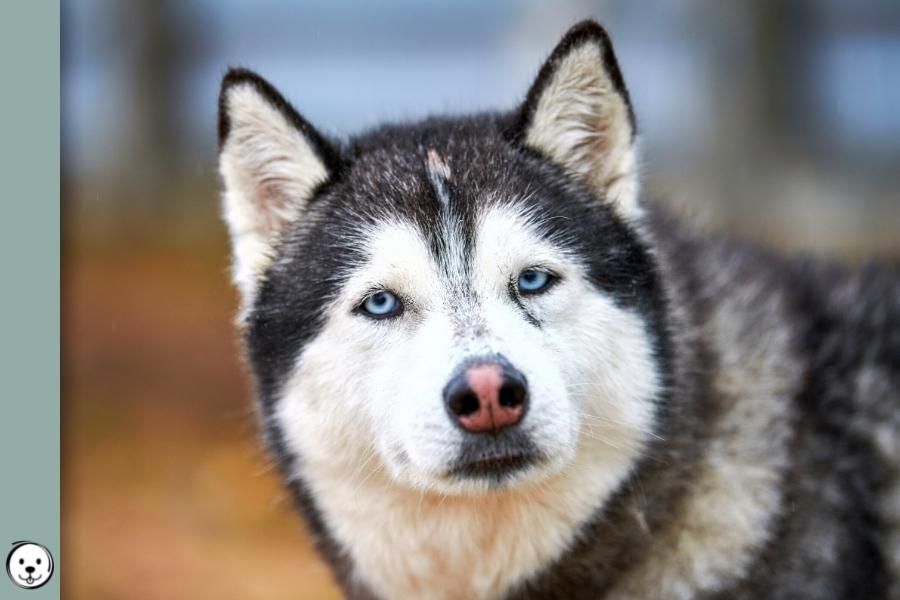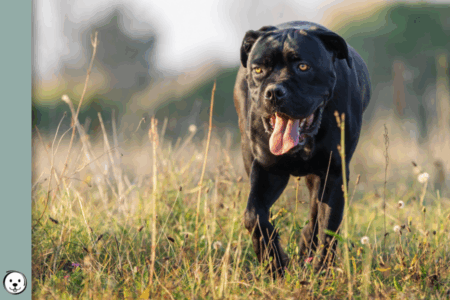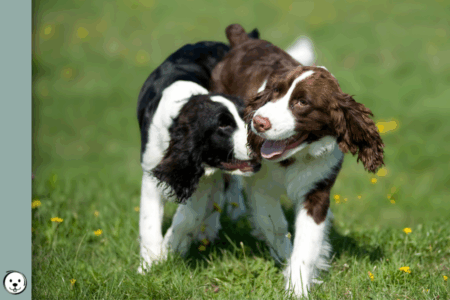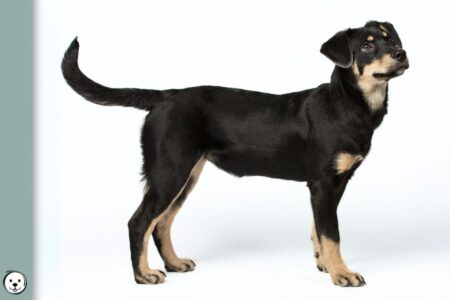The recently discovered eA allele at the E-Locus is responsible for a particular phenotype with reduced eumelanin production and increased phaeomelanin expression. In Northern breeds, we call this called Northern domino. But this allele is not limited to sled dogs.
What is Ancient Domino?
Domino reduces eumelanin expression and increases phaeomelanin expression.
But it can for sure take some practice to recognize it.
Domino modifies whatever base pattern a particular dog can express depending on his K locus and A locus. The particular domino phenotype depends on what a dog would have if it wasn’t domino.
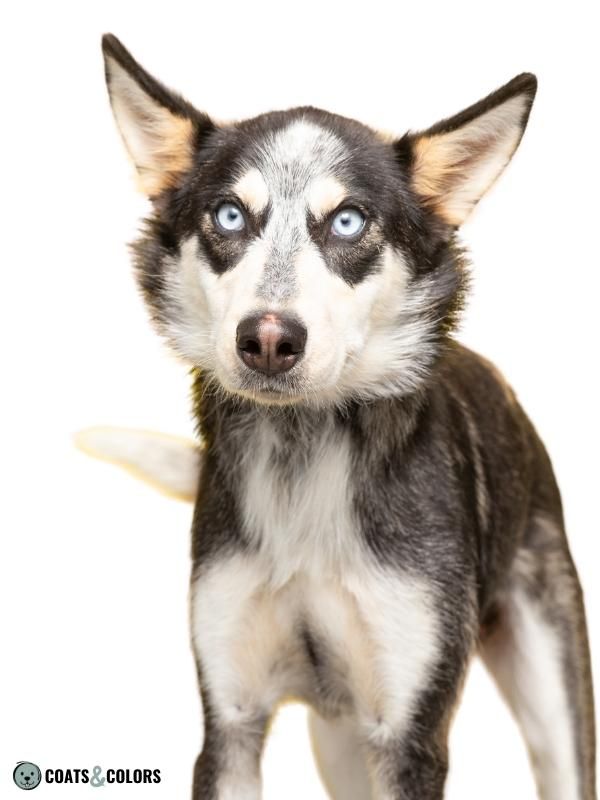
A dominant black (KB/-) dog should have a solid dark coat in all pigmented areas. But with domino (KB/- eA/-), some of their otherwise masked A locus pattern may become visible. This can mimic E/- ky/ky.
On brindle patterns (kbr/- eA/-), domino can fade brindle striping. Or it can make brindle visible in areas that should normally be solid black but have faded due to domino.
And sable (ky/ky Ay/- eA/-), agouti (ky/ky aw/- eA/-), tan points (ky/ky at/- eA/-), and recessive black (ky/ky a/a eA/-) with domino will be expressed with a lower amount of eumelanin than expected.
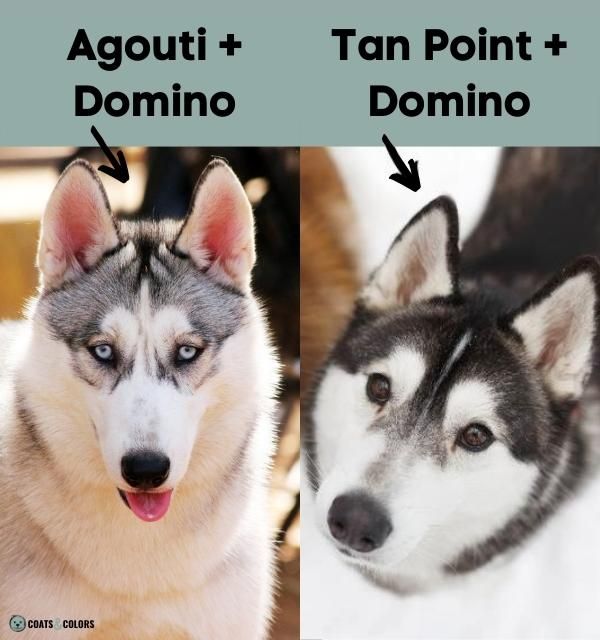
Domino typically removes shading from sable and agouti patterns. Any banded coat will show reduced black banding with a mainly light base and only a short dark hair tip.
Domino modifies tan points to become large and very light in color. And saddles will shrink to a residual patch of black on the topline. And even recessive black dogs that are also domino may suddenly express some phaeomelanin in their coat, often with smutty tan point-like markings.
The eA Allele
The E locus is part of the system that tells pigment cells what type of pigment they should produce (this is called the pigment type switch). Different alleles at the E locus influence how much eumelanin will be produced in different base patterns.
Domino is a reduced-function mutation that can be described as “partial recessive red”. True recessive red fully inhibits eumelanin production, domino can only partially reduces the spread of eumelanin.
The newly discovered variant eAncient Red is responsible for different phenotypes with lesser-than-expected eumelanin in a variety of dog breeds. Why ancient? Well, this allele was found in 10.000 year old dog remains[2]. Some texts still refer to this allele simply as eD as in eDomino.
Ancient domino (eA) is (incomplete) recessive to melanistic mask (Em) and wild type (E) but (incomplete) dominant to recessive yellow (e). Its interaction with other domino alleles (eG, eH) is not yet understood.
Any masked or normally pigmented dog could be a carrier of ancient domino (Em/eA, E/eA). Some sources tell me that some dogs might show reduced eumelanin (e.g. a just so slightly less pronounced mask in Em/eA puppies next to Em/E siblings) which hints at incomplete dominance.
But ancient domino is only expressed in dogs that are eA/eA or eA/e. It is possible that eA/e might give an overall lighter pattern compared to eA/eA due to weak incomplete dominance of E locus alleles [1].
The effect of ancient domino combined with other domino alleles (eA/eG, eA/eH) is unknown since such pairings are very rare[1]. But eA is very similar to eG while eH should cause a stronger effect.
Domino Phenotypes
An eA/- genotype impacts any phenotypes regulated by the K locus and A locus.
Domino decreases the amount of eumelanin in any pattern. It often also turns a dog’s whiskers, hair roots, and undercoat very pale and creates a prominent vertical pink stripe on the nose.
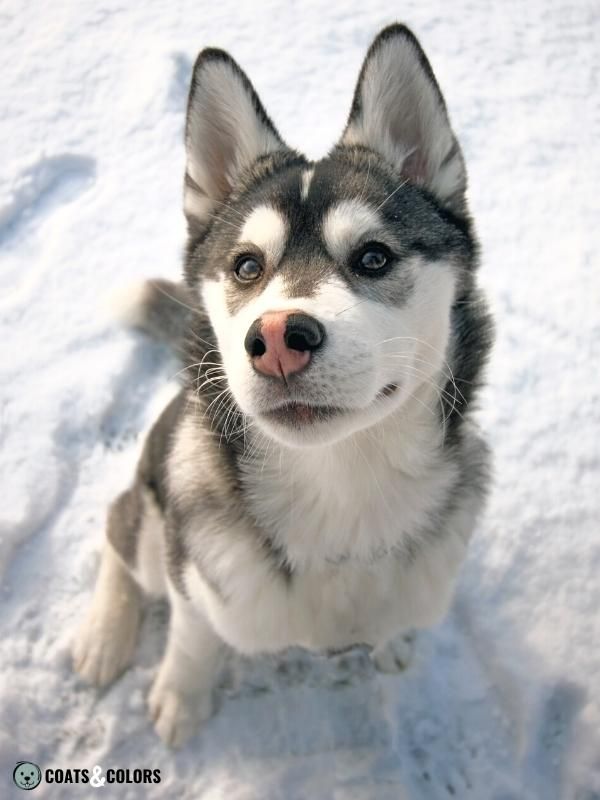
But ancient domino gives very different phenotypes depending on the actual background it works on. Even in affected dogs, its expression varies from very minimal to very obvious.
A locus patterns span a broad range from very yellow to very black patterns and often show some overlap due to incomplete dominance at the A locus. This is reflected in their domino versions, e.g. a very light tan point domino can mimic a very dark agouti domino.
And in some cases it can be surprisingly hard to distinguish between domino patterns and some other patterns. In some cases, domino can resemble regular recessive red (a pale sable domino can look very solid cream), sable (clear sable and sable domino can look similar), tan point (KB/- at/- domino can mimic normal points), or wolfgrey (KB/- aw/- domino can look very grizzly)[1].
Ancient Domino & Countershading
In addition, countershading lightens ventral phaeomelanin. Some people find it hard to distinguish between the pale open face markings in some domino patterns and the pale face markings from countershading. It doesn’t help that many domino breeds also have countershading at the same time!
Ancient Domino & Dominant Black (KB/- eA/-)
In a dominant black dog, you normally would expect a solid dark coloration in all pigmented areas. But domino downregulates black from the K locus, so the A locus pattern becomes visible to some degree.
In dominant black domino dogs, the A locus pattern will often be expressed to some degree.
KB domino combined Ay or Ays (clear sable or shaded sable) often results in a uniform gray color (some breeds call it “blue”). Or it can mimic a sable pattern with some gray overlay at the back.
KB domino combined aw (agouti) can look uniformly grayish or mimic agouti, just more smudgy and grizzled.
KB domino combined at (tan points) or asa (saddle pattern) often expresses with a smutty grayish overcast on all areas that would normally be red in these patterns. Many Husky x Lab mixes have these sooty gray face markings. Sometimes, this combination can very much mimic normal tan points or saddles.
A reader suggested some dogs with domino + dominant black + tan points (eA/- KB/- at/-) might be hard to tell apart from normal E/- ky/ky at/a phenotypes which also often causes small-ish smutty points.
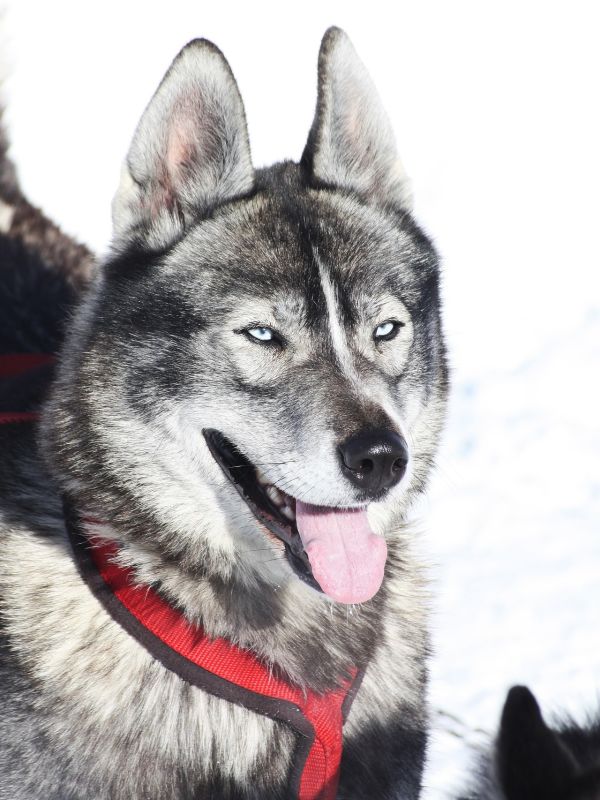
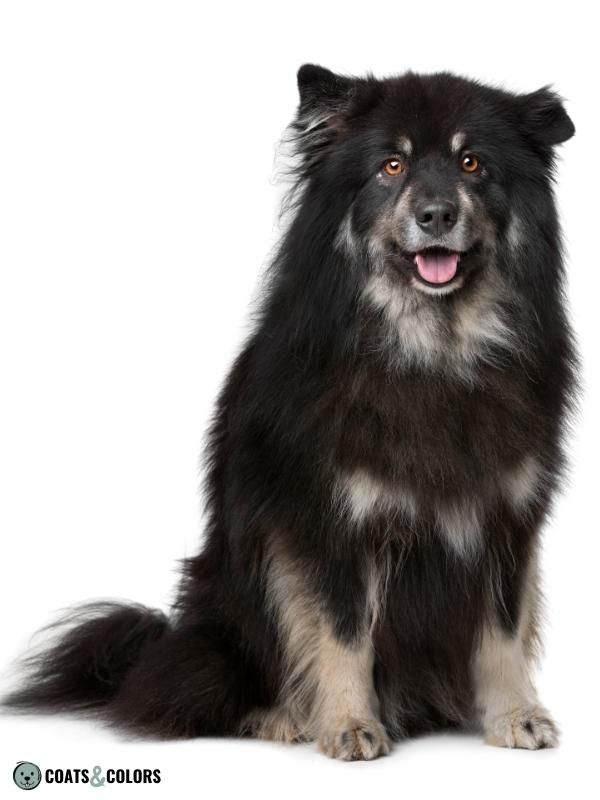
Ancient Domino & Brindle (kbr/- eA/-)
Brindle causes a pattern with dark eumelanin stripes on a red background. Since brindle (kbr) is not that common in domino breeds, this phenotype is not as common as in sighthound domino.
Domino can make brindle striping less distinct and turn it more smudgy and gray. Many domino brindles show reduced brindling altogether with no visible striping on their extremities.
In dogs with brindle points and domino (eA/- ky/ky at/-), some striping may suddenly appear on the dog’s faded black mantle area.
Ancient Domino & Sable (ky/ky eA/- Ay/-)
Since domino reduces the amount of eumelanin and gives pale phaeomelanin, it can remove sabling from a sable pattern and turn any sable into a solid cream-yellow coat. This domino phenotype resembles clear sable or even recessive red and is sometimes called fawn domino or cream domino.
Since puppy coats in sable dogs can be way darker than in adults, some dark sable shading or pale facial pattern may still be visible at birth and fade out later on. The study that described the eA allele mentioned that this interesting phenotype is found rather often in Drever and Cirneco dell’Etna[1].
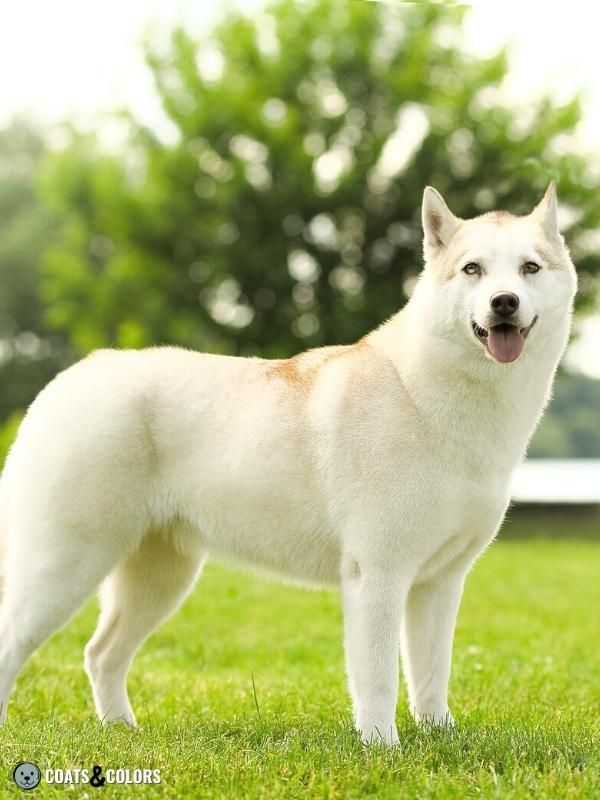
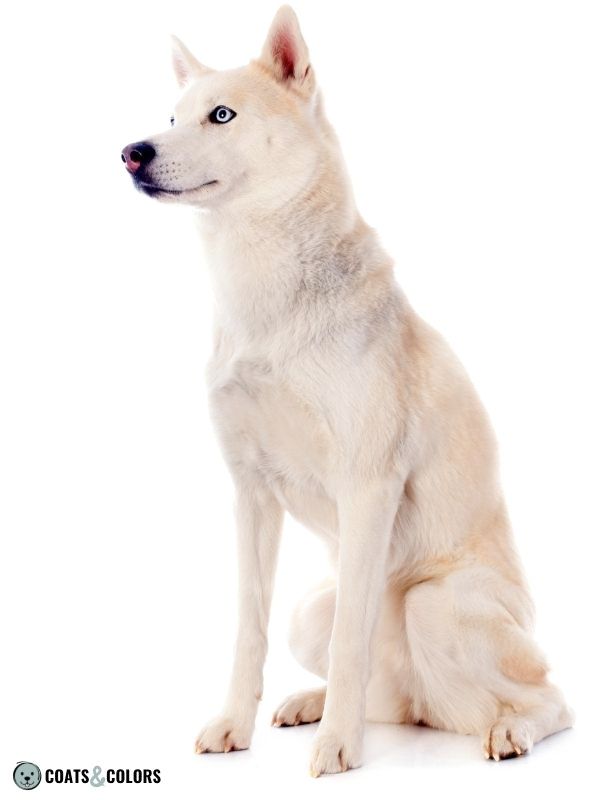
Ancient Domino & Agouti (ky/ky eA/- aw/-)
Domino agouti is one of the most common phenotypes in some northern breeds. It gives light facial “open face” markings typical for the Siberian Husky or Alaskan Malamute.
This pattern often has a widow’s peak and can resemble a regular shaded sable pattern, but many dogs also keep some of their banded nose bar. One distinctive feature in many domino agouti dogs is a little bit of residual spectacle pattern with some minimal black shading under the eyes.
Domino removes some of the dark hair banding from the agouti pattern and lightens phaeomelanin. This often creates a pale coat with a paler hair base and dark hair tips.


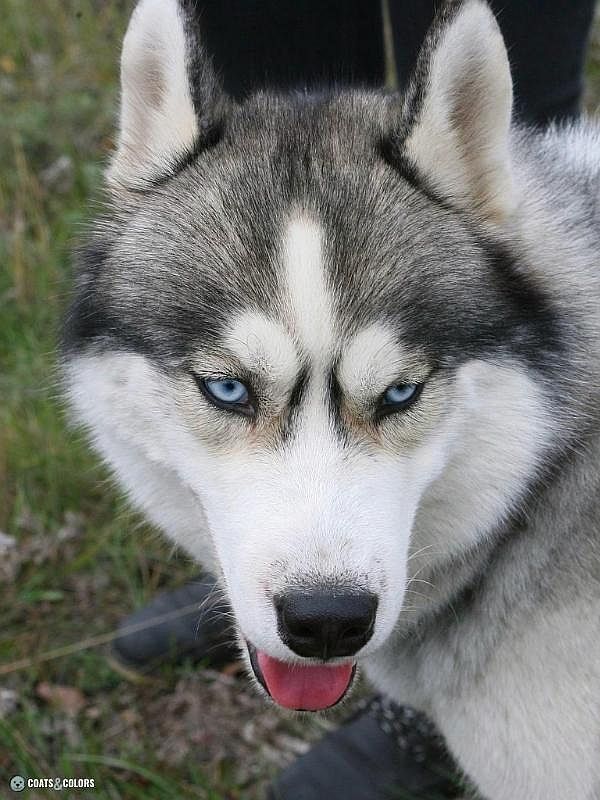
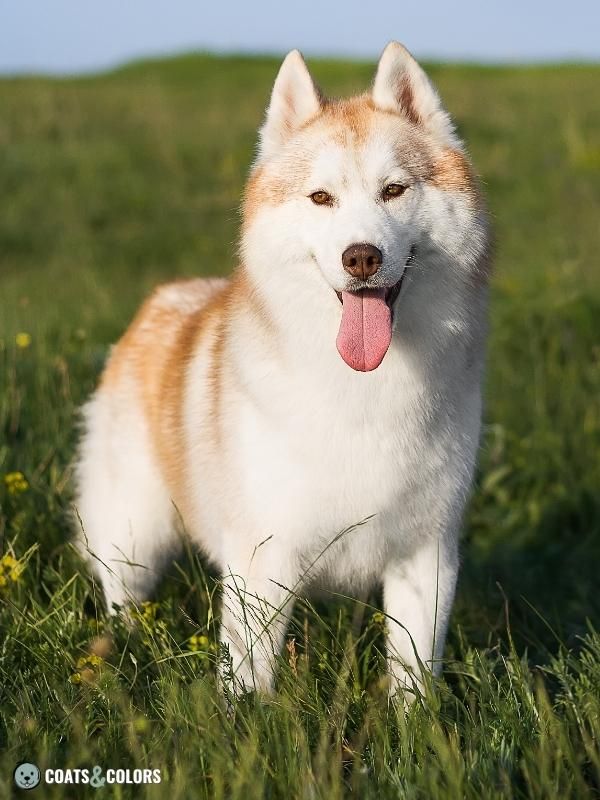
Ancient Domino & Saddle (ky/ky eA/- asa/-)
Domino causes saddles to shrink up to the point where they are barely noticeable anymore.
In Beagles, this creates a phenotype with a very minimal saddle called “pied“.

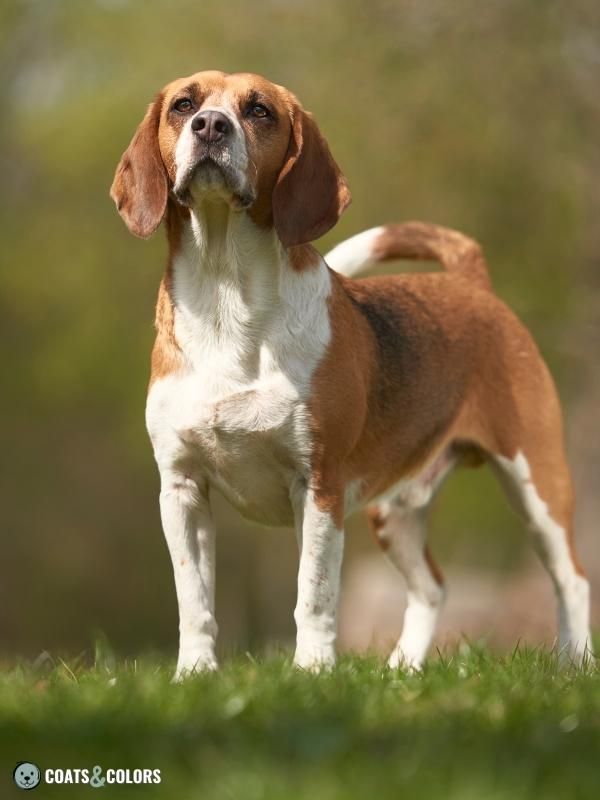

Ancient Domino & Tan Point (ky/ky eA/- at/-)
The pairing of domino with tan points creates one of the most common domino phenotypes.
A tan point domino pattern gives extended pale facial markings with a widow’s peak and a residual dark nose bar running from the forehead not all the way to the nose leather.
The pale coat with dark hair tips can mimic a very dark shaded sable pattern. Sometimes the darker areas on the dog’s back get small enough to look like creeping tan on a non-domino dog.
In Alaskan Malamutes, this phenotype is called seal & white (but its not real seal). In Siberian Huskies, very crisp black-based tan point domino patterns are called black & white.

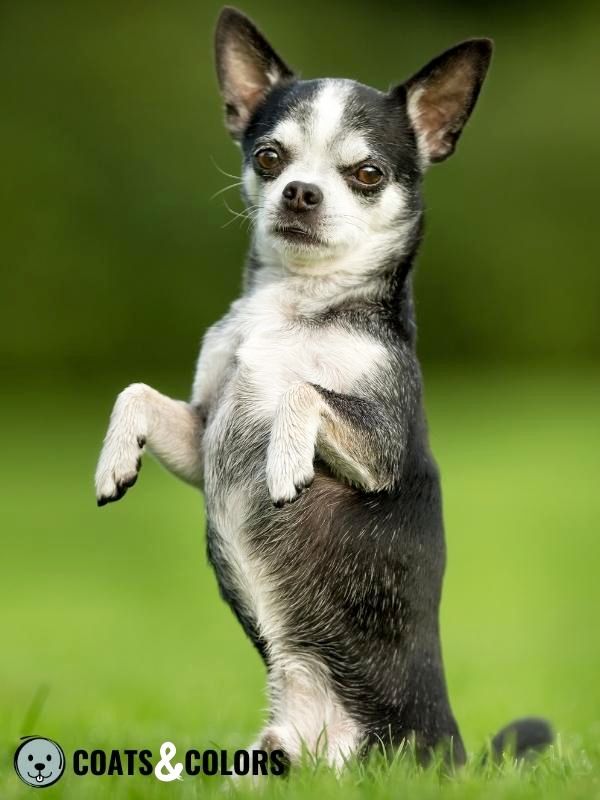
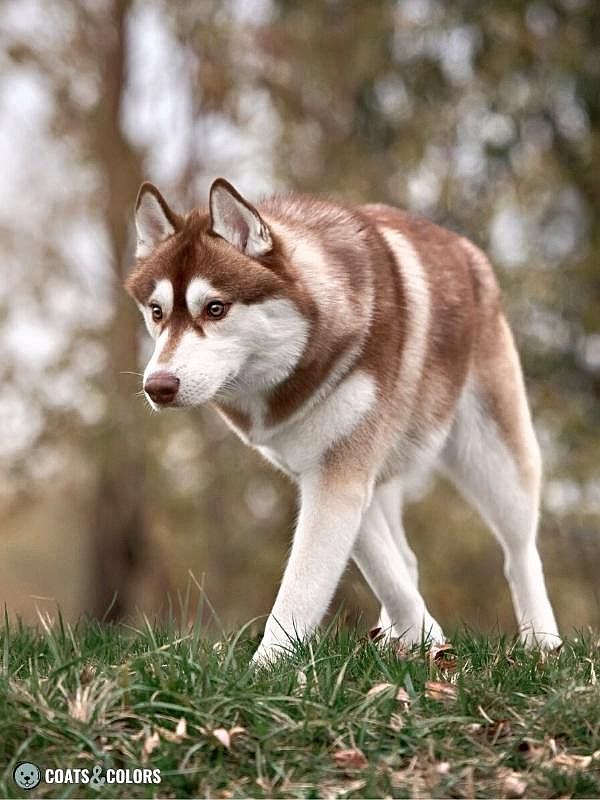
Ancient Domino & Recessive Black (ky/ky eA/- a/a)
Recessive black should turn the coat a solid color in all pigmented areas. This is caused by a loss-of-function variant that is no longer able to promote phaeomelanin production.
But the eA allele can cause pigment cells to produce phaeomelanin anyway. This can cause an unexpected patterned phenotype with smutty tan markings or a dark agouti-like pattern with pale undercoat and red to cream markings. Some dogs with ky/ky eA/- a/a have lighter goggles.
Ancient Domino Merle (eA/- M/-)
Yes, domino can even modify a merle pattern!
Beautiful Suri of Josephine Lange in Germany probably (probably Mh/m ky/ky at/at eA/e) is one of the rare examples of a tan point domino merle.
Breeds with eA
Ancient Domino is common in many northern and spitz-type breeds. But it was found in lots of other types of dog breeds[1], too. This shows how much intermixture there has been before closing studbooks.
- East-Siberian Laika
- Finnish Lapphund
- Finnish Spitz
- Karelian Bear Dog
- Lapponian Herder
- Nordic Spitz
- Siberian Husky
- West-Siberian Laika
- Greenland Dog
- Nenets Laika
- Alaskan Klee Kai
- Pomsky
- Basenji
- Cirneco Dell’Etna
- Kritikos Lagonikos
- Peruvian Hairless Dog
- Mexican Hairless Dog
- Basset Fauve de Bretagne
- Beagle
- Drever
- English Foxhound
- Finnish Hound
- Hungarian Hound
- Plott
- Serbian Hound
- Chesapeake Bay Retriever
- Deutsche Bracke
- Pyrenean Mastiff
- Chihuahua
- Chinese Crested Dog
- Phalene
- Löwchen
- Pug
- Tibetan Spaniel
- Alaskan Husky
- Chinook
- Northern Inuit
- Tamaskan Dog
- Saarlooswolfdog
- German Shepherd
- Berger d’Auvergne
Learn More
Links
[1] Anderson et al. (2020). Comprehensive genetic testing combined with citizen science reveals a recently characterized ancient MC1R mutation associated with partial recessive red phenotypes in dog. Canine Genet Epidemiol. https://doi.org/10.1186/s40575-020-00095-7
[2] Ollivier et al. (2013). Evidence of Coat Color Variation Sheds New Light on Ancient Canids. PLoS ONE. https://doi.org/10.1371/journal.pone.0075110
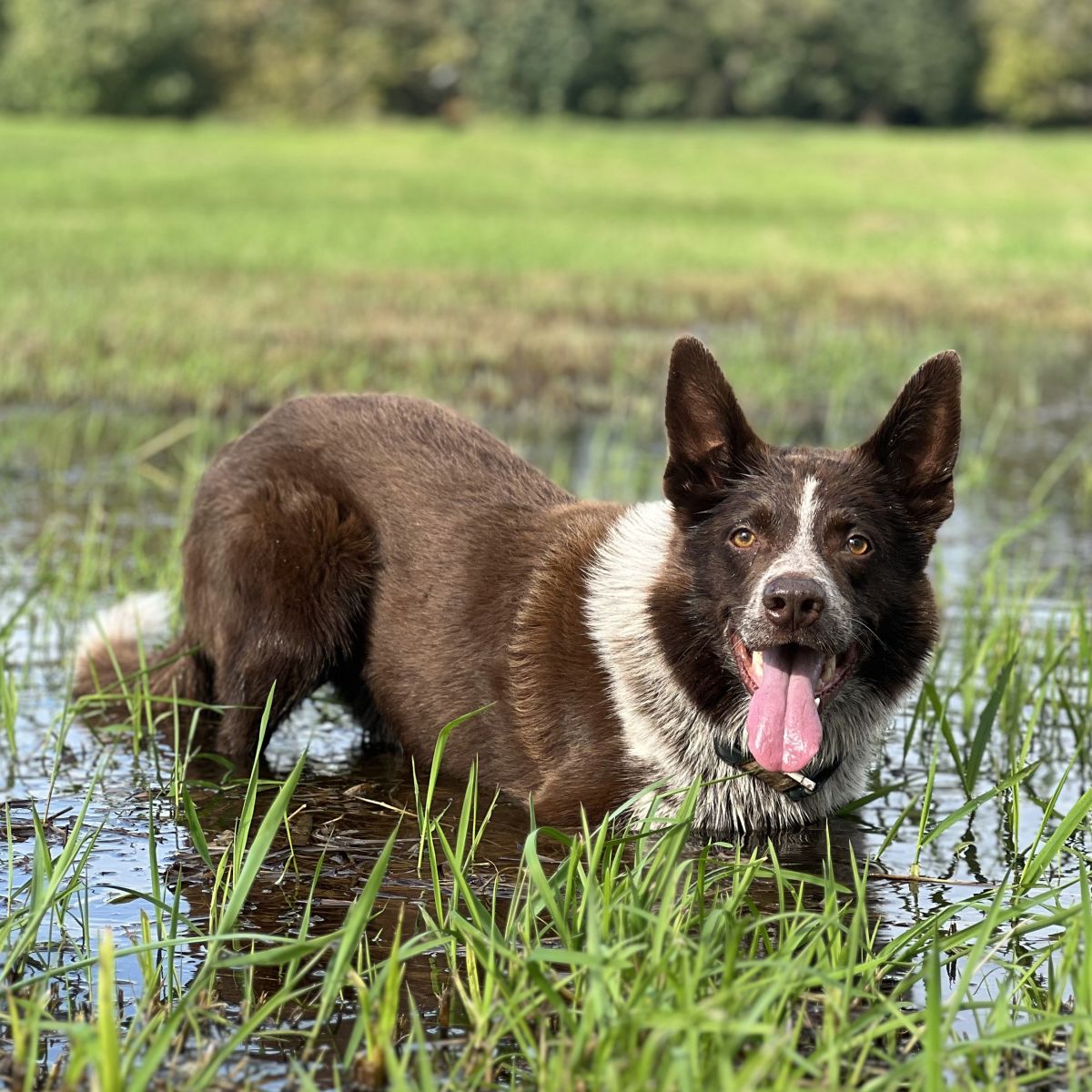
Hi! I’m Steffi. I am a biologist and a big time dog nerd. You are curious about coat color genetics? You’ve come to the right place! Read more.

